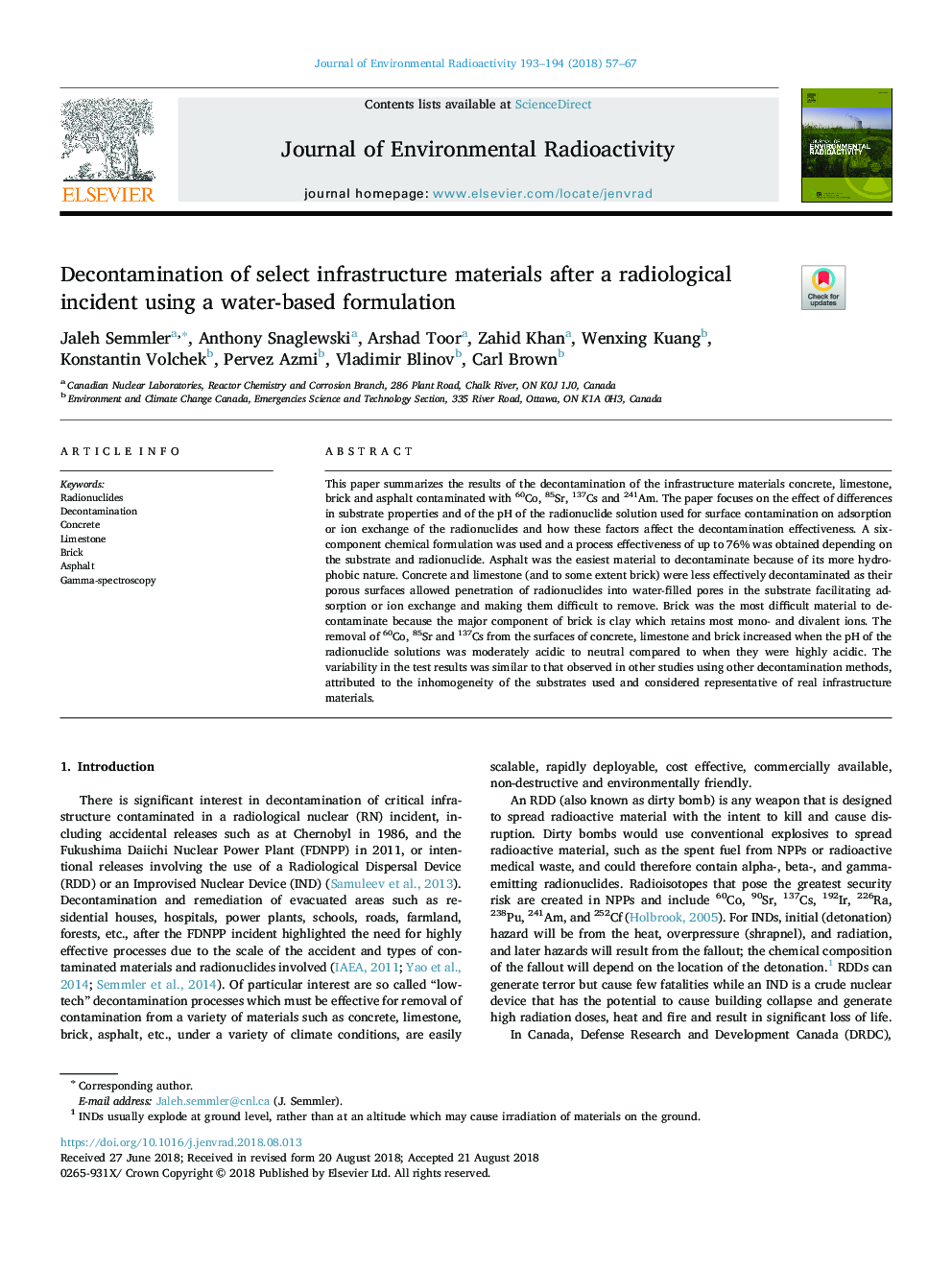| Article ID | Journal | Published Year | Pages | File Type |
|---|---|---|---|---|
| 10142566 | Journal of Environmental Radioactivity | 2018 | 11 Pages |
Abstract
This paper summarizes the results of the decontamination of the infrastructure materials concrete, limestone, brick and asphalt contaminated with 60Co, 85Sr, 137Cs and 241Am. The paper focuses on the effect of differences in substrate properties and of the pH of the radionuclide solution used for surface contamination on adsorption or ion exchange of the radionuclides and how these factors affect the decontamination effectiveness. A six-component chemical formulation was used and a process effectiveness of up to 76% was obtained depending on the substrate and radionuclide. Asphalt was the easiest material to decontaminate because of its more hydrophobic nature. Concrete and limestone (and to some extent brick) were less effectively decontaminated as their porous surfaces allowed penetration of radionuclides into water-filled pores in the substrate facilitating adsorption or ion exchange and making them difficult to remove. Brick was the most difficult material to decontaminate because the major component of brick is clay which retains most mono- and divalent ions. The removal of 60Co, 85Sr and 137Cs from the surfaces of concrete, limestone and brick increased when the pH of the radionuclide solutions was moderately acidic to neutral compared to when they were highly acidic. The variability in the test results was similar to that observed in other studies using other decontamination methods, attributed to the inhomogeneity of the substrates used and considered representative of real infrastructure materials.
Related Topics
Physical Sciences and Engineering
Energy
Nuclear Energy and Engineering
Authors
Jaleh Semmler, Anthony Snaglewski, Arshad Toor, Zahid Khan, Wenxing Kuang, Konstantin Volchek, Pervez Azmi, Vladimir Blinov, Carl Brown,
